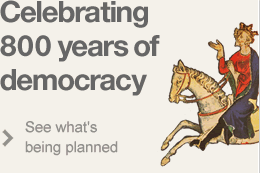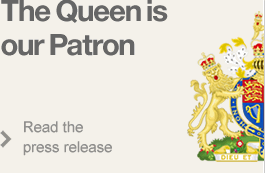Isabella, her older sister Margaret, and her brother Alexander II of Scotland, all feature in clause 59 of Magna Carta. They were the children of William, King of Scots (William the Lion), and his queen, Ermengarde de Beaumont.
Isabella and Margaret became the hostages of King John of England in 1209, as part of the agreement which ended a furious argument between their father William, and King John. The argument may have been caused by a proposal by the king of France, Philip Augustus, in which he, Philip, would marry Margaret. John had no intention of allowing a marriage alliance to be formed between the royal houses of Scotland and France, his arch-enemy, and to avoid this he manoeuvred an agreement whereby instead he had control over the marriages of William’s elder daughters. A later chronicler records that John was supposed to marry Margaret to his own son, Henry, and Isabella to a senior English noble.
A few years later, John also secured control of the marriage of Isabella’s brother, Alexander, as part of a deal with William whereby he agreed to assist the king of Scots against a serious rebellion. The marriages of his legitimate children should have been a powerful diplomatic tool for William – marriages could be used to cement old alliances and forge new ties – but he had now handed control of them to King John.
Margaret and Isabella became John’s hostages, but this should not be understood in the modern sense of the word. While they were not free to do as they pleased, documents from John’s government held at The National Archives in London show that they lived comfortable lives while in English custody. They also seem to have been kept together, which must have lessened the trauma of being removed from their family and home in Scotland. It should also be remembered that as princesses they would have expected to marry and move away from their families at a young age.
John did not however keep to his agreement to arrange their marriages; he already had the upper hand over William the Lion, so did not stand to gain much by marrying William’s daughter to his own son. And he could not arrange the marriage of the younger sister, Isabella, before he arranged the marriage of the elder. His failure to keep to the terms of these agreements was clearly a point of contention and when William died in December 1214, his son, Alexander II, and his advisers, had no intention of accepting the situation that had been forced upon his father. This is reflected in Magna Carta, which promises to deal with the liberties and rights of Alexander and the issue of his sisters and other hostages. John’s failure to honour Magna Carta led to Alexander joining the baronial rebellion. When Alexander II came to terms with the minority government of Henry III, the new English king, he insisted that the marriages of himself and his sisters should be resolved. It was finally agreed in June 1220 that Alexander would marry Joan, Henry III’s sister, while Henry was to find suitable husbands for Alexander’s sisters within an agreed timeframe.
In June 1221, Alexander II and Joan were married, followed a few months later by Margaret’s marriage to Hubert de Burgh, a leading figure in Henry III’s minority government. Isabella, however, remained unmarried. She was a prestigious young woman, born to a reigning king, but it is possible that her prospects may have been damaged by her sister’s marriage. Hubert de Burgh, though tremendously powerful, had a relatively inauspicious background and was not created an earl until 1227. Prospective noble husbands of Isabella may have been put off by the fact that her older (and therefore senior) sister had not married into the nobility.
A later chronicler claimed that in 1231 Henry III himself wanted to marry Isabella, but was persuaded not to because it would not be acceptable for a reigning king to marry the younger sister of the wife of one of his subjects. This account cannot be taken at face value – Isabella was herself married by 1231 – but it does illustrate the effect that the marriage of one sister could have on the prospects of another.
Initially Isabella, still unmarried, returned to Scotland. But in 1225 she married 13 year old Roger Bigod, the heir to the earldom of Norfolk, at Alnwick. The match may have been masterminded by Hubert de Burgh, now married to Margaret. At this time, if a noble died before his heir was old enough to take possession of the lands and titles, the custody (wardship) of the heir and his lands could be granted by the king to another noble. This was the case for Roger, and in 1226 Alexander II of Scotland purchased the wardship of Roger from Henry III. Therefore the young couple, Roger and Isabella, moved to Scotland, living at the Scottish court until 1233 when Roger was knighted by Henry III and entered into his inheritance.
Thereafter, Roger was active at Henry’s court and a key player in the machinations between Henry III and the rebellious barons. He was also close to his relative Gilbert Marshall, who married Isabella’s youngest sister (confusingly, another Margaret) in 1235. Roger attended the wedding, and Gilbert and Roger were often together at court. It seems likely then that Isabella and her younger sister may have spent a lot of time together.
Isabella herself however remains a shadowy figure. The marriage was childless and Roger made protracted and unsuccessful attempts to have it annulled. The grounds he gave for the annulment were consanguinity (meaning that the couple should not have been married because they were too closely related by blood – something forbidden by the Church) but it seems very likely that his motivation was the desire to take another wife in an attempt to have heirs. However, despite visits to Rome to plead his case, the final judgement went against him and Roger was obliged to take Isabella back. He appears to have accepted this with good grace, and they lived together in their later years.
The date of Isabella’s death is not known; she was buried at Blackfriars, also the place of burial of her sister Margaret and Margaret’s husband Hubert de Burgh. It was probably also the resting place of their youngest sister, Gilbert Marshall’s wife Margaret. Roger, at his death in 1270, was buried in Thetford in Norfolk. But if the marriage between Isabella and Roger had not always been happy, there appears to have been some reconciliation – their hearts were apparently buried together at the parish church of Framlingham, in the heart of the Bigod family lands.
By Dr. Jessica A. Nelson, The National Archives.
Further reading:
D.A.Carpenter, The Minority of Henry III (London, 1990).
D.A.Carpenter, The Reign of Henry III (London, 2003).
A.A.M.Duncan, ‘King John of England and the Kings of Scots’, King John: new interpretations, ed. S.D. Church (Woodbridge, 1999) pp.247-71.
A.A.M.Duncan, The Kingship of the Scots, 842-1292 (Edinburgh, 2002).
M.Morris, The Bigod Earls of Norfolk in the Thirteenth Century (Woodbridge, 2005).
Richard D. Oram ed., The Reign of Alexander II, 1214-1229 (Leiden, 2005).
Featured Article
Introduction – Runnymede and all that. Winston Churchill described the Magna Carta as “the foundation of principles and systems of government of which neither King John or his nobles dreamed”. Now in Politics we’re used to the law of unintended consequences...
Read on...Recent Articles
- Magna Carta's American Adventure
- 800th anniversary of Bristol...
- Bristol 800 concert and...
- Emancipation and Magna Carta
- Terrorism and Tolerance -...
- Magna Carta
- Magna Carta Benches mark...
- ABA Magna Carta Memorial...
Stay updated
If you would like to keep informed about the work of the Magna Carta Trust and our partners, please sign up to the newsletter below.
Become a Supporter
There are a number of significant supporter opportunities. Register your interest early to ensure the widest range of options.
Find out more




